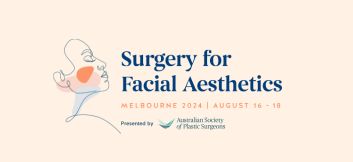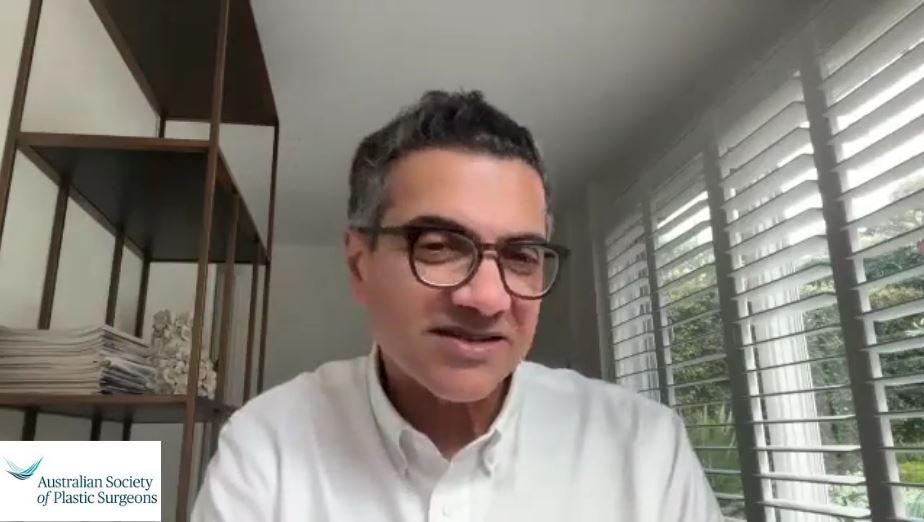Procedures
Nipple Enhancement for Inverted Nipples
- About Your Specialist Plastic Surgeon
- Cosmetic
- Non-surgical Procedures
- Plastic Surgery Glossary
- Questions for Your Surgeon
- Reconstructive
- Surgical Procedures
- Abdominoplasty (Cosmetic)
- Abdominoplasty (muscle repair postpartum)
- Arm Lift
- Body Contouring
- Body Lift
- Breast Asymmetry Correction
- Breast Augmentation (Implants)
- Breast Implants with Lift
- Breast Lift
- Breast Reconstruction
- Breast Reduction
- Brow Lift
- Burns and Scarring
- Buttocks Lift
- Chin Surgery
- Cleft Lip & Palate
- Ear Surgery
- Eyelid Reduction Surgery
- Facelift Surgery
- Facial Implants
- Fat injection
- Gender Affirming Surgeries
- Gynaecomastia (Male Breast Reduction)
- Hair Replacement Surgery
- Hand Surgery
- Labiaplasty
- Liposuction
- Nipple Enhancement for Inverted Nipples
- Nose Surgery
- Scar Revision
- Skin Cancer
- Thigh Lift
- Tissue Expansion
Nipple Enhancement for Inverted Nipples
Any surgical or invasive procedure carries risks. Before proceeding, you should seek a second opinion from an appropriately qualified health practitioner.
Correction of inverted nipples is a procedure that aims to improve the appearance of the breasts by increasing the projection of one or both of the nipples to make them more symmetrical and normal in appearance.
Correction of inverted nipples surgery corrects the flat appearance of the nipples, increasing the nipple projection, making the appearance of the nipples and breasts more normal. The surgery involves incisions either at the base of the nipple, across the nipple, or around the areola to allow release of the scar tissue preventing the nipple from coming out normally.
Correction of inverted nipples is an individualised procedure and may not be suitable for everyone. Always talk to your Specialist Plastic Surgeon before making a decision. Your Specialist Plastic Surgeon will assess your condition and general health, and plan the treatment that is best suited to you.
Correction of inverted nipples may be suitable for you if:
- You are physically healthy and at a stable weight
- You have realistic expectations
- You are a non-smoker or have stopped smoking
- Your breasts are fully developed
- Your nipples are significantly different in the amount they project (stick out)
- Your nipples are always inverted
- You are unable to breast feed because of nipple inversion
Before opting for correction of inverted nipples, you must keep in mind that:
- Some patients are able to improve the amount of projection of the nipple with nipple piercings alone
- Some patients are able to improve the amount of projection of the nipple with breast augmentation (implants)
- The surgery may make it impossible to breast feed
- Surgeons generally recommend waiting until breast development, child birth and breastfeeding have stopped before undertaking correction of inverted nipple surgery – however if the degree if inversion is severe breast feeding may be impossible
- Smokers are at increased risk of complications from any surgery. If you are serious about undergoing cosmetic surgery, you should try to quit smoking
Correction of inverted nipples can be performed under either local or general anaesthesia.
Modern anaesthesia is safe and effective, but does have some risks. Ask your Specialist Plastic Surgeon and anaesthetist for more information. Your surgeon and/or anaesthetist will ask you about all the medications you are taking or have taken, and any allergies you may have. Make sure you have an up to date list before the surgery.
Modern surgery is generally safe but does have the potential for risks and complications to occur.
Some of the possible complications and risks associated with correction of inverted nipples may include:
- Bleeding from an operated site.
- Infection that may require treatment with antibiotics or further surgery in some cases
- Allergic reaction to sutures, dressings or antiseptic solutions or allergic drug reactions
- Pain, bruising and swelling around the operated site
- Slow healing, often related to smoking or diabetes
- Short-term nausea following general anaesthesia and other risks related to general anaesthesia, such as deep vein thrombosis, cardiac and pulmonary complications
- Changes in breast and nipple sensation
- Temporary or permanent areas of numbness
- Unacceptable scarring
- Breastfeeding difficulties, including reduced milk supply
- Asymmetry (unevenness) of the size or projection of the nipples
- Inadequate correction
- Recurrence of the problem
- Further surgery may be necessary to address complications
Before undergoing surgery, it is important that you:
- Be as fit as possible to help the recovery process
- Check with your surgeon about your medications as some may need to be stopped
- Stop smoking
You will also be asked to provide a complete medical history for your Specialist Plastic Surgeon including any health problems you have had, any medication you are taking or have taken, and any allergies you may have.
You may be advised to stop taking certain medicines such as non-steroidal anti-inflammatory drugs (NSAIDs), aspirin, and medicines that contain aspirin. You may also be asked to stop taking naturopathic substances such as garlic, ginkgo, ginseng and St John’s Wort as they may affect clotting and anaesthesia. Always tell your surgeon EVERYTHING you are taking.
You may be given medicines to take before the surgery, such as antibiotics.
Your surgeon will also advise you if any other tests are required, such as blood tests, X-ray examinations or an Electrocardiograph (ECG) to assess your heart.
Prepare a “recovery area” in your home. This may include pillows, ice packs, a thermometer and a telephone within easy reach. Make sure you arrange for a relative or friend to drive you to and from the hospital or clinic. Someone should also stay with you for at least 24 hours after you return home.
Your surgeon should give detailed preoperative instructions. Follow them carefully.
Following your surgery, dressings or bandages may be applied to your incisions. Depending on the extent of your procedure, you may need to take a few days off work to rest. Avoid heavy lifting, strenuous exercise, swimming and strenuous sports until advised by your surgeon.
If you experience any of the following symptoms, notify your surgeon immediate:
- Temperature higher than 38°C or chills
- Heavy bleeding from the incisions
- Worsening redness around the incision sites
- Increasing pain or tenderness, or other problems that appear to be worsening
Your surgeon will give you specific instructions on post-operative care. These instructions may include:
- How to care for your surgical site(s) following surgery
- Medications to apply or take orally to aid healing and reduce the risk of infection
- Specific concerns to look for at the surgical site(s) or in your general health
- When to follow-up with your surgeon
Be sure to ask your surgeon specific questions about what you can expect during your individual recovery period, such as:
- Where will I be taken after my surgery is complete?
- What medication will I be given or prescribed after surgery?
- Will I have dressings/bandages after surgery? If so, when will they be removed?
- Are stitches removed? When will they be removed?
- When can I resume normal activity and exercise?
- When do I return for follow-up care?
Scars are an inevitable part of any invasive surgery. Your Specialist Plastic Surgeon will endeavour to minimise scarring and to keep your scars as inconspicuous as possible. Scars may fade with time and become barely noticeable over time.
As with all surgical procedures, revisional surgery may be necessary to correct minor irregularities.
In most circumstances, correction of inverted nipple surgery does not need to be repeated. However, as with all surgical procedures, revisional surgery may be necessary to correct minor asymmetry, scars or recurrence.
Cost is always a consideration in elective surgery. Prices for a tummy tuck can vary widely between Specialist Plastic Surgeons. Some factors that may influence the cost include the surgeon’s experience, the type of procedure used and the geographic location of the office.
Costs associated with the procedure may include:
- Surgeon’s fee
- Hospital or surgical facility costs
- Anaesthesia fees
- Prescriptions for medication
- Post-surgery garments
- Medical tests
Your surgeon should welcome any questions you may have regarding fees.
Areola:
Pigmented skin surrounding the nipple
Excision:
To remove the skin
General anaesthesia:
Drugs and/or gases used during an operation to relieve pain and alter consciousness
Grafting:
A surgical technique to recreate your nipple and areola
Haematoma:
Blood pooling beneath the skin
Intravenous sedation:
Sedatives administered by injection into a vein to help you relax
Local anaesthesia:
A drug injected directly to the site of an incision during an operation to relieve pain
Mammogram:
An x-ray image of the breast
Sutures:
Stitches used by surgeons to hold skin and tissue together
Visit the Plastic Surgery Glossary for more medical terms.
This website is intended to provide you with general information only. This information is not a substitute for advice from your Specialist Plastic Surgeon and does not contain all the known facts about this procedure or every possible side effect of surgery. It is important that you speak to your surgeon before deciding to undergo surgery. If you are not sure about the benefits, risks and limitations of treatment, or anything else relating to your procedure, ask your surgeon to explain. Patient information provided as part of this website is evidence-based, and sourced from a range of reputable information providers including the American Society of Plastic Surgeons, Better Health Channel and Mi-tec medical publishing.
Featured Stories

Member Blog with Dr Ellis Choy: What is a Deep Plane Facelift?
Who is the ideal candidate for a deep plane facelift?…
Continue reading
